HOPEX Business Process Analysis
HOPEX Business Process Analysis
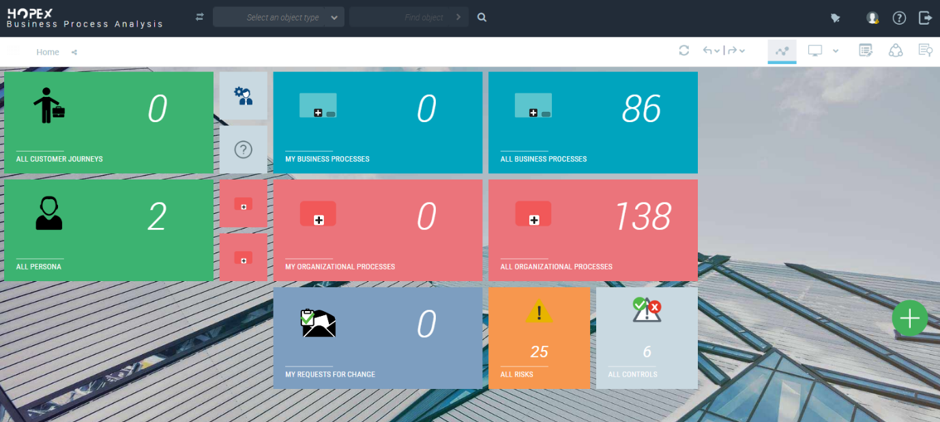
One of the modules of the HOPEX BPA product family, HOPEX Business Process Analysis is the most effective way to improve your customer experience, control over how the digital transformation will unfold and manage your risks by fully extracting, evaluating and transforming your business processes.
HOPEX Business Architecture works integrated with Hopex platform. In other words, it enables you to improve your business goals and IT transformation by showing the key information about your organization in the clearest way.
Why Business Process?
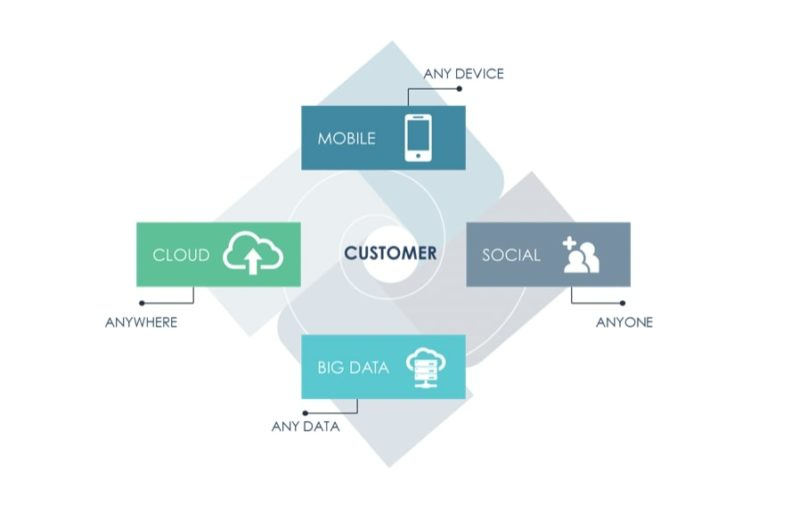
Business digitalization
- How can I take advantage of digital technologies to create new revenue streams?
- Power has shifted from companies to customers in the digital age
- New technologies provides customers with multiple touchpoints to interact with companies
- Companies are inventing new ways of engaging with customers while improving customer experience

Documenting business
- How can I get a clear picture of my business and understand how it works?
- Get a clear picture of the business
- Improve business operations
- Adapt to the rapidly evolving market, stay ahead on the competition
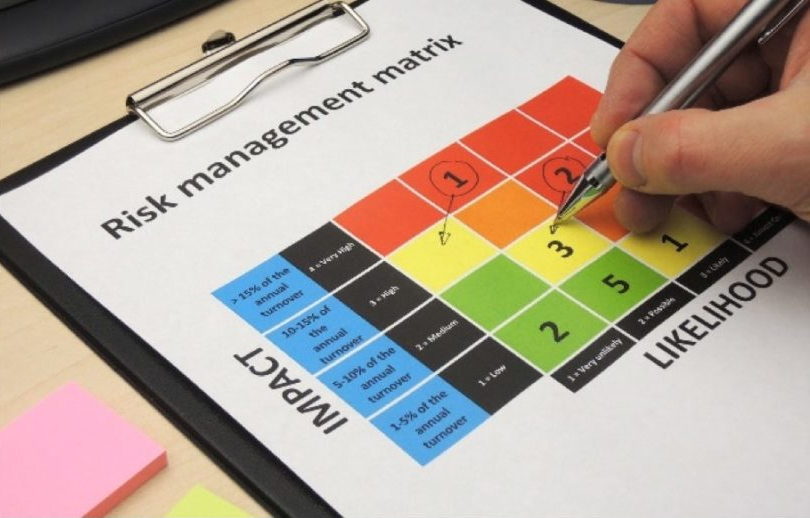
Identity new risks
- How can I identity new risks, build controls, and assess compliance?
- New risks are impacting the business
- Business operations increasingly rely on IT systems
- Volume of regulations has increased dramatically over the past few years
Key Benefits
Improve business efficiency
- Model, analyze and standardize your business processes to improve business efficiency and support new business models
Deliver superior customer experience
- Map customer journeys to design optimal processes and deliver superior customer experience
Ensure complience with policies and regulations
- Maintain business process models in a single repository, identify areas of concerns, and improve operations to drive compliance initiatives
Key Benefits
Model, document and share business processes
- Automatically generate diagrams
- Leverage collaborative design platform and out of the box workflows
- Maintain business process models in a single repository
- Use Business Process Model and Notation (BPMN)
Map customer journeys
- Map persona-based customer journeys
- Measure customer satisfaction
- Connect touchpoints to underlying processes
- Design customer-centric business processes
Map risks
- Enrich process models with risks and controls
- Conduct risk assessments on process diagrams
- Implement controls to reduce risks associated to processes
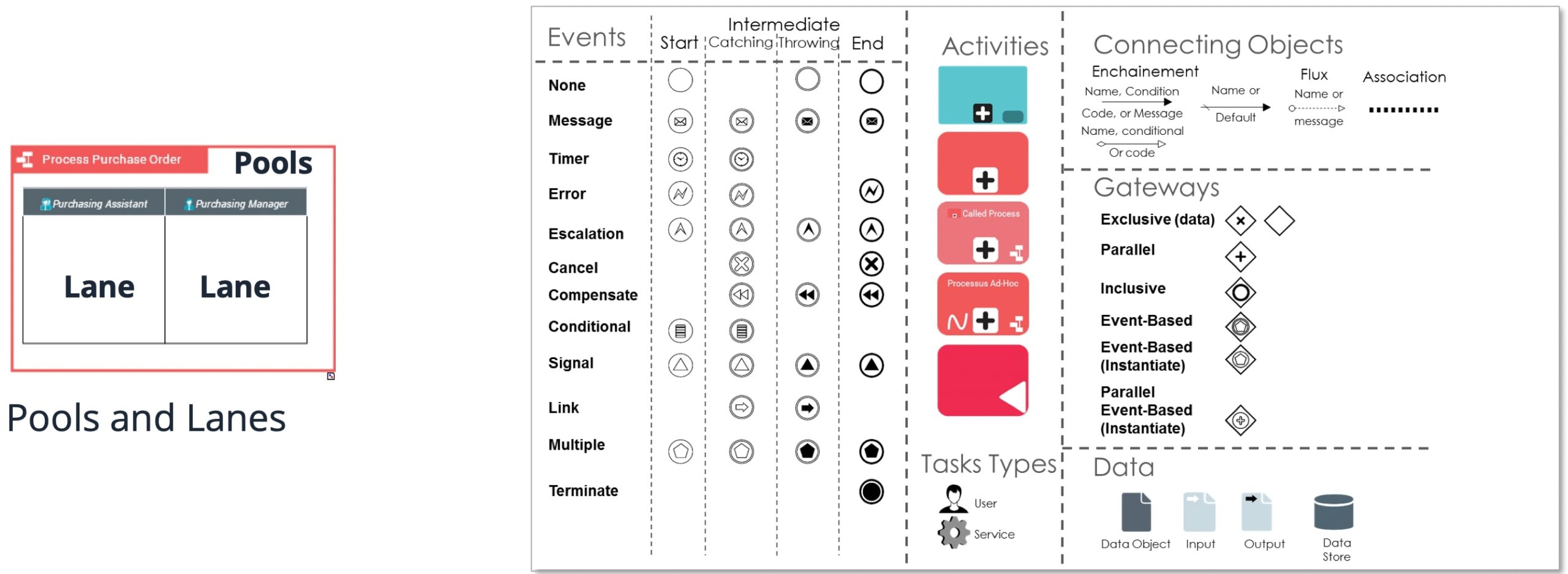
The solution is readily usable and understandable by all users from business analysts to technical developers
Overview of Business Processes
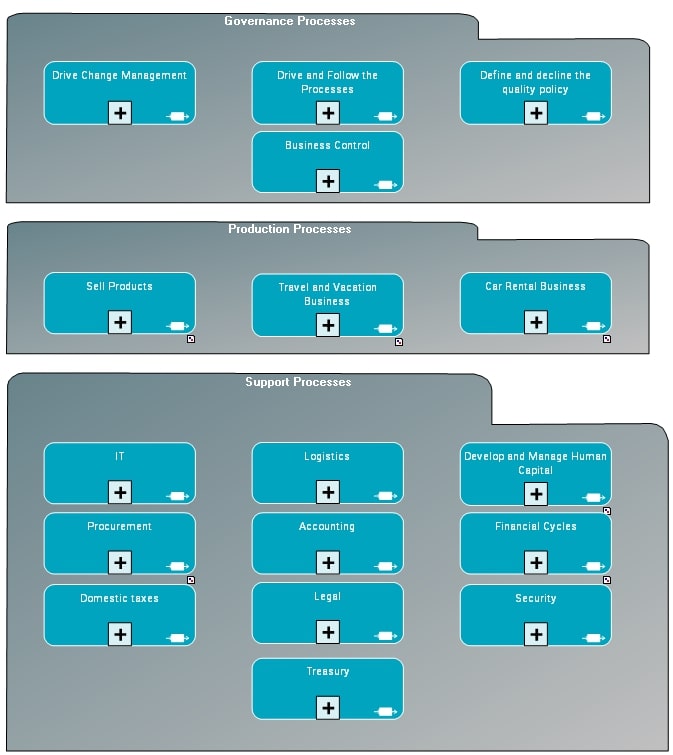
Describes main business processes and clients of an organization using the BPMN notation.
Provides an overview of all business processes in an organization
Business Process Diagram
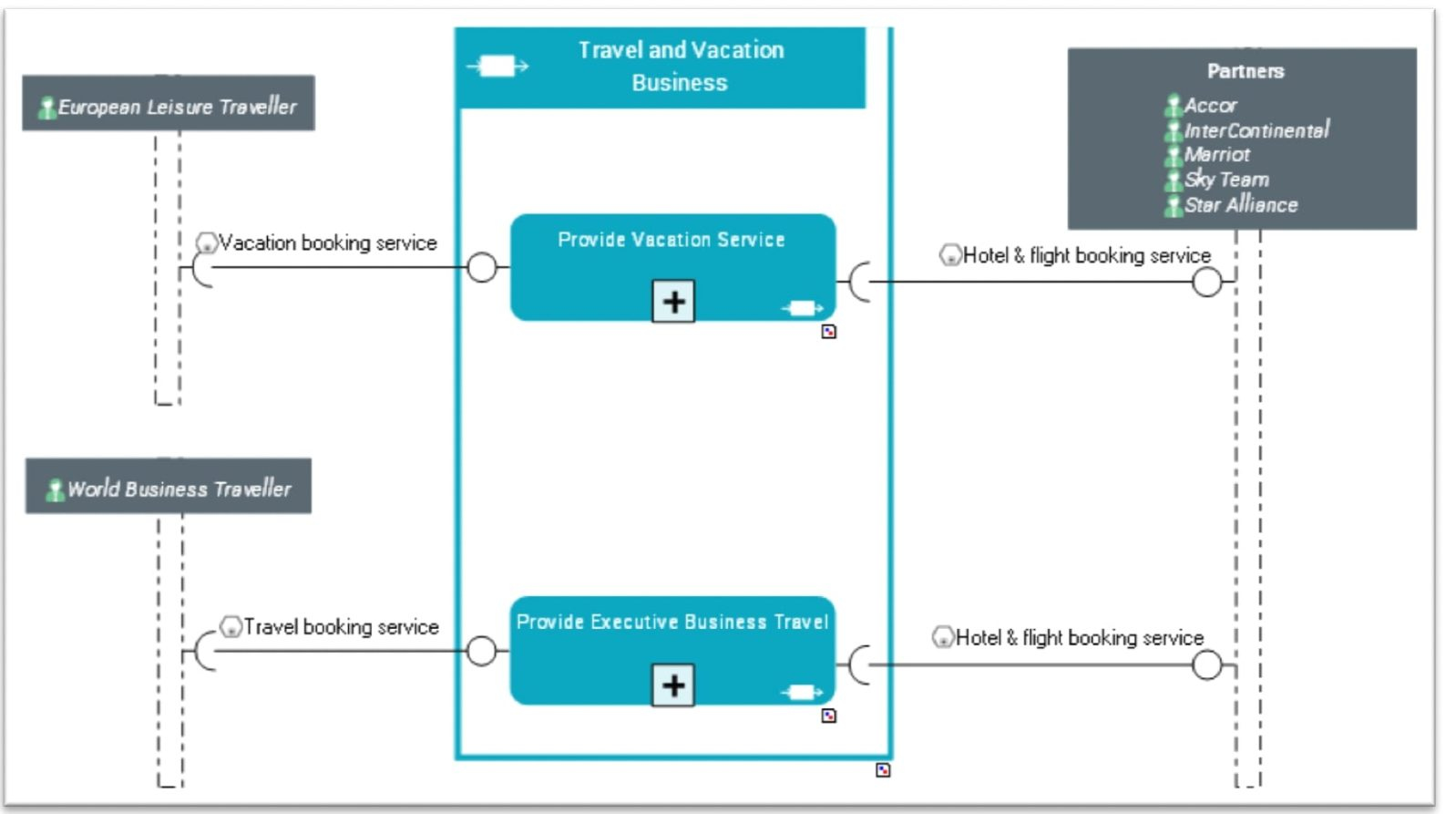
- Describes business structure of an organization
- Depicts product or service offerings, as well as business processes that produce them and their implementation by functional, organizational or system processes
Helps focus on important items by giving a comprehensive view of business processes
- Describes a sequence of operations and participants
- Assigns participants to organizational units of the company.
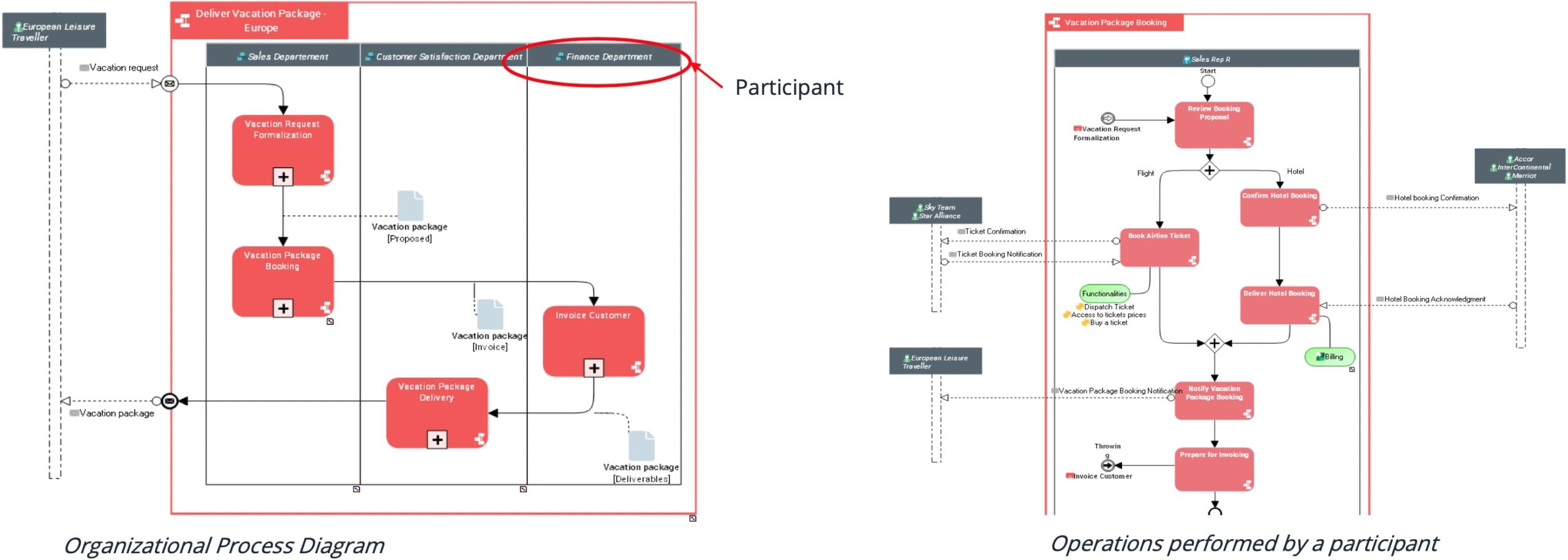
- Enables users to drill down to one or multiple sub-processes
- Each process item is stored in the repository for reuse purpose
Organizational chart
Describes company organization (structures, departments, functions, people etc.) and external organization (clients, customers, partners)
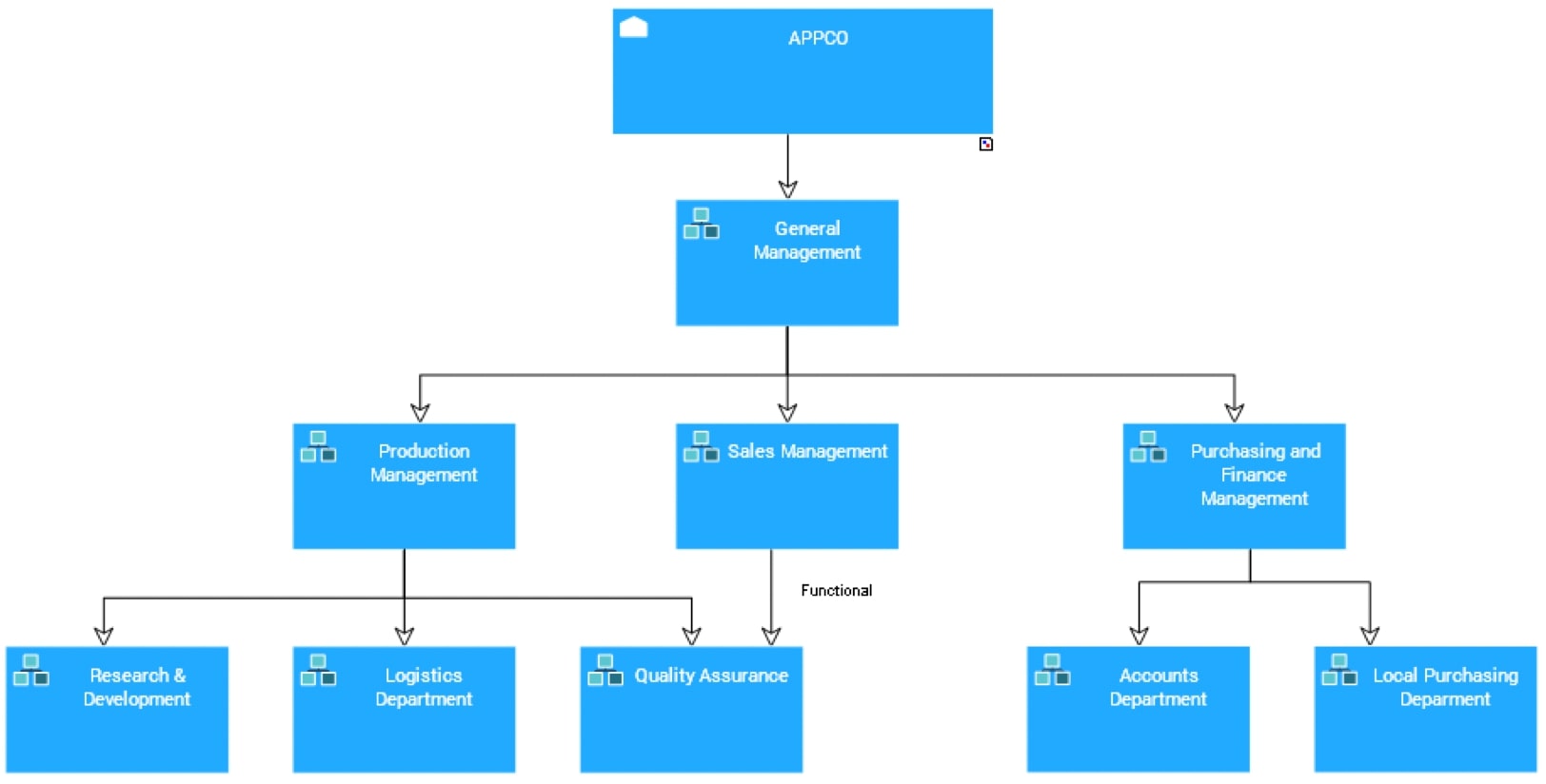
Provides a static view of an organization associating organizational units with processes
System Process Diagram
- Describes workflows, and sequences of tasks
- Tasks can be assigned to participants that represent applications, IT services or org-units (for interactive tasks).
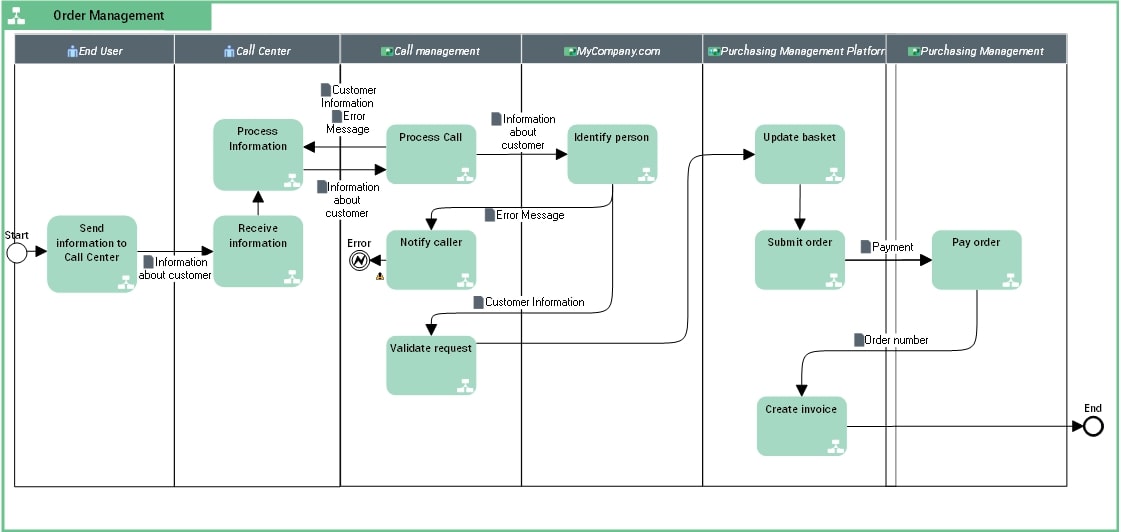
Automatically check IT Architecture compliance with implemented workflows, based on data stored in the repository.
KPIs
Enables uses to create and monitor Key Performance Indicators tied to processes
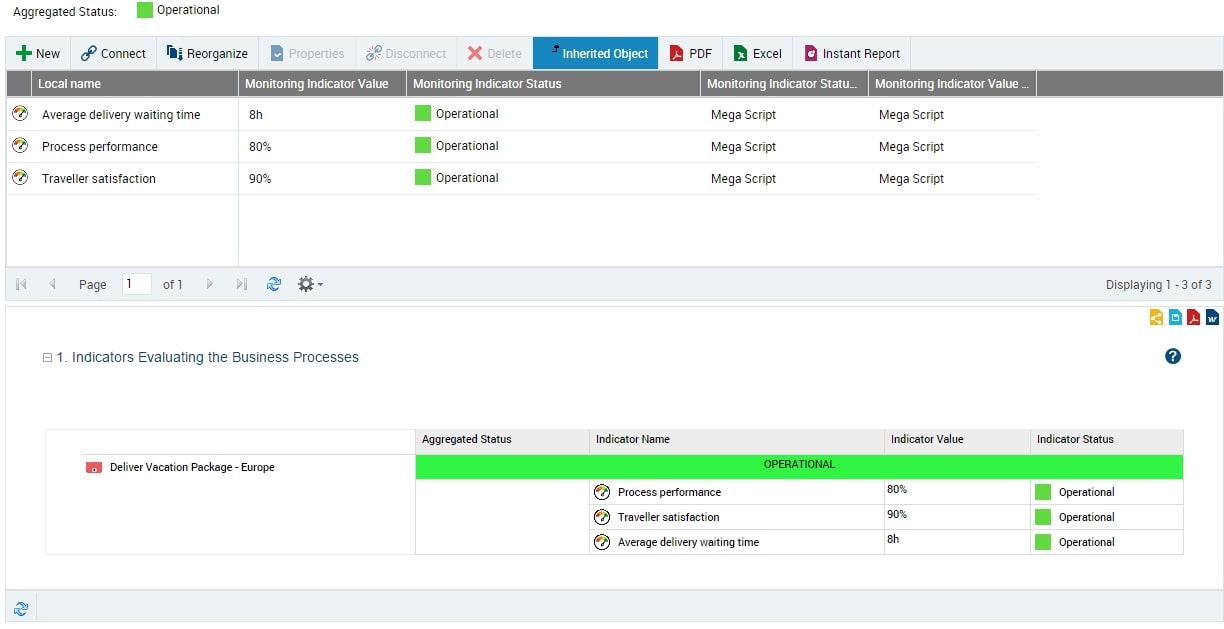
KPIs enables organizations to control process objectives and take action
Process Assessment
Enable users to assess processes through questionnaires, and standard and custom criteria such as execution (design, knowledge, IT support) and performance (business value, efficiency and risks)
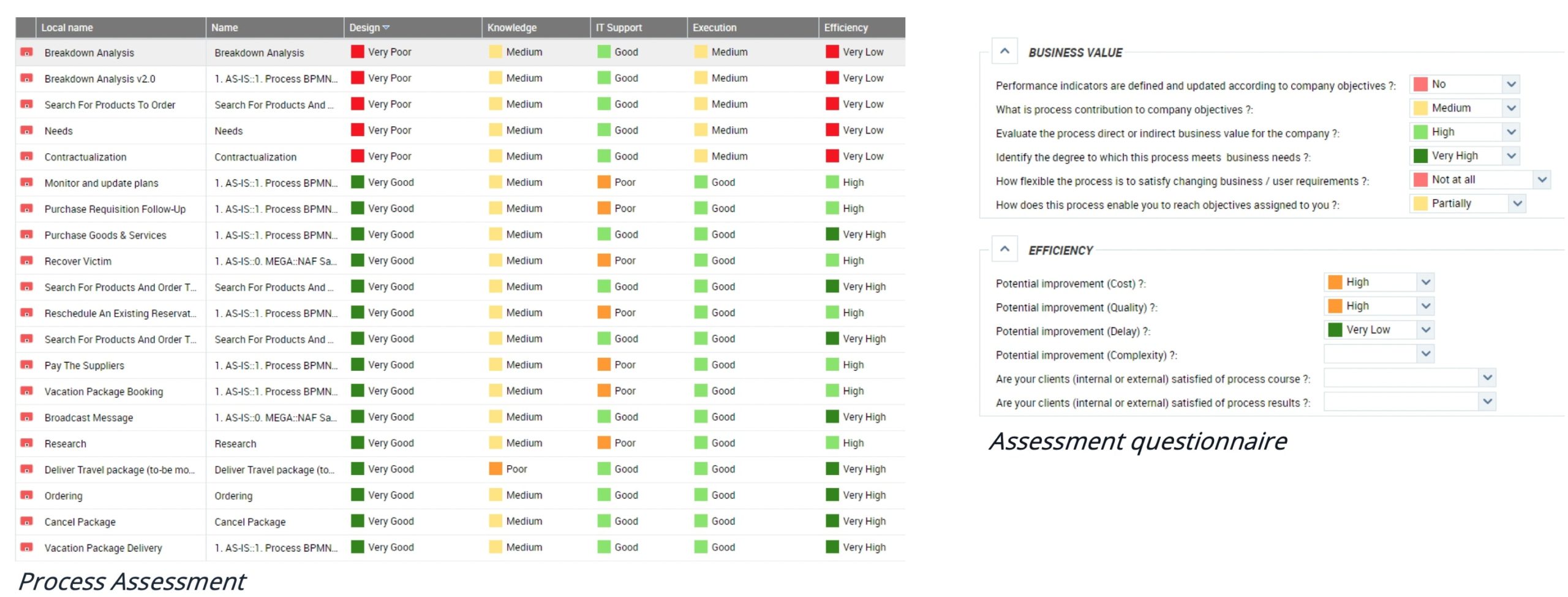
Quickly Create and Share Reports
Enable users to quickly create reports: pie charts, bar charts, Gantt charts, table and matrix reports, multidimensional charts

Users can easily create and share reports throughout the organization
Business Processes must align with customer journeys
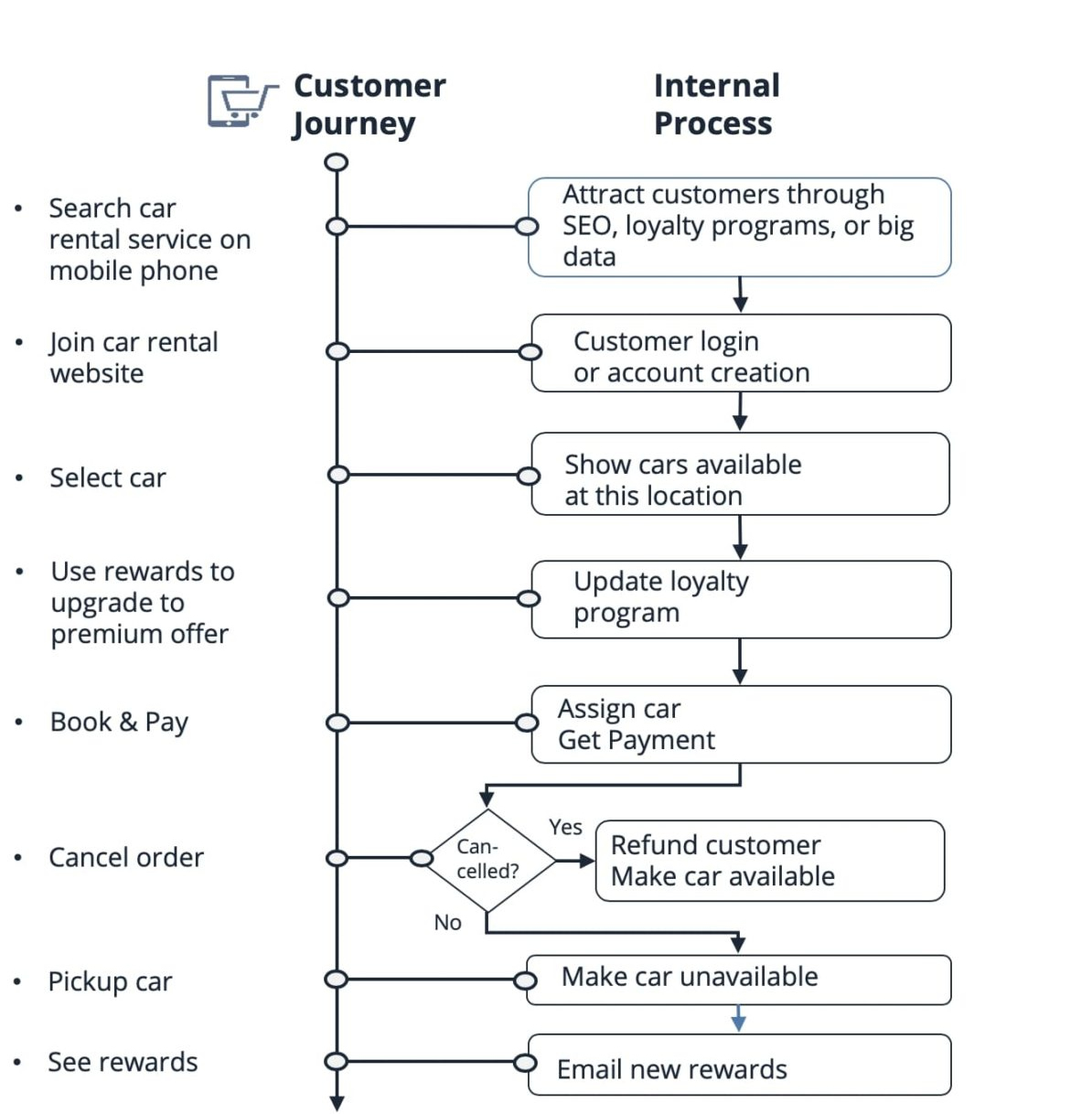
Successful companies need to:
- Build systems of engagement across the entire purchase process
- Align company’s processes with the customer journey
3 Steps to build innovation around Customer Journeys
- Understand the customer journey
- Determine key moments to influence customers
- Link digital moments to business processes
Customer Journey Mapping
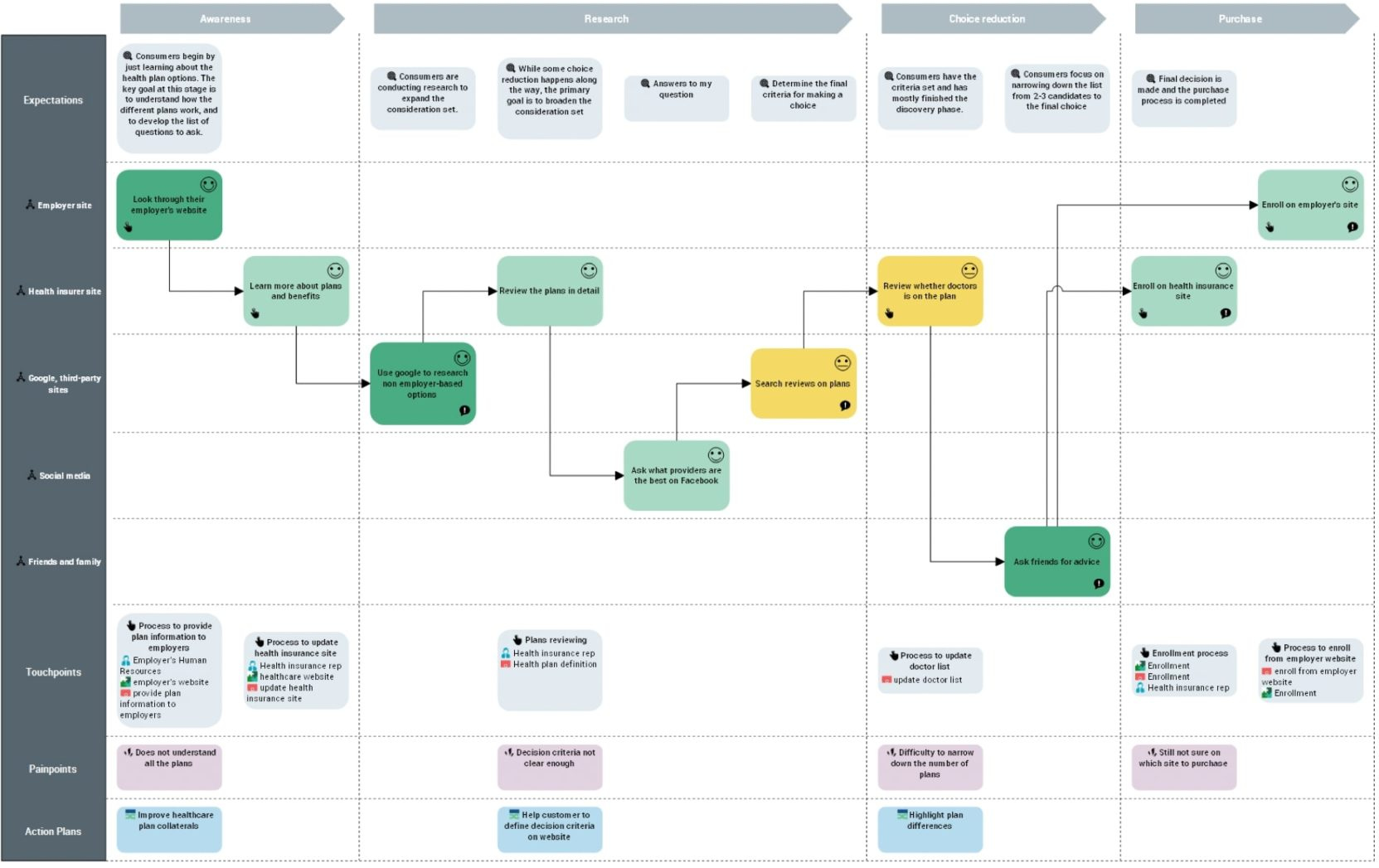
- Manage end-to-end customer experience, map and rank touchpoints in order to identify where to optimize/invest first
- Link touchpoints to organization’s internal processes, and check how internal processes support the customer journey
By rating customer experience on different touchpoints, users can identify touchpoints to focus on and related internal processes to improve customer experience
Customer Journey Assessment
Rate touchpoints based on a set of criteria at different times
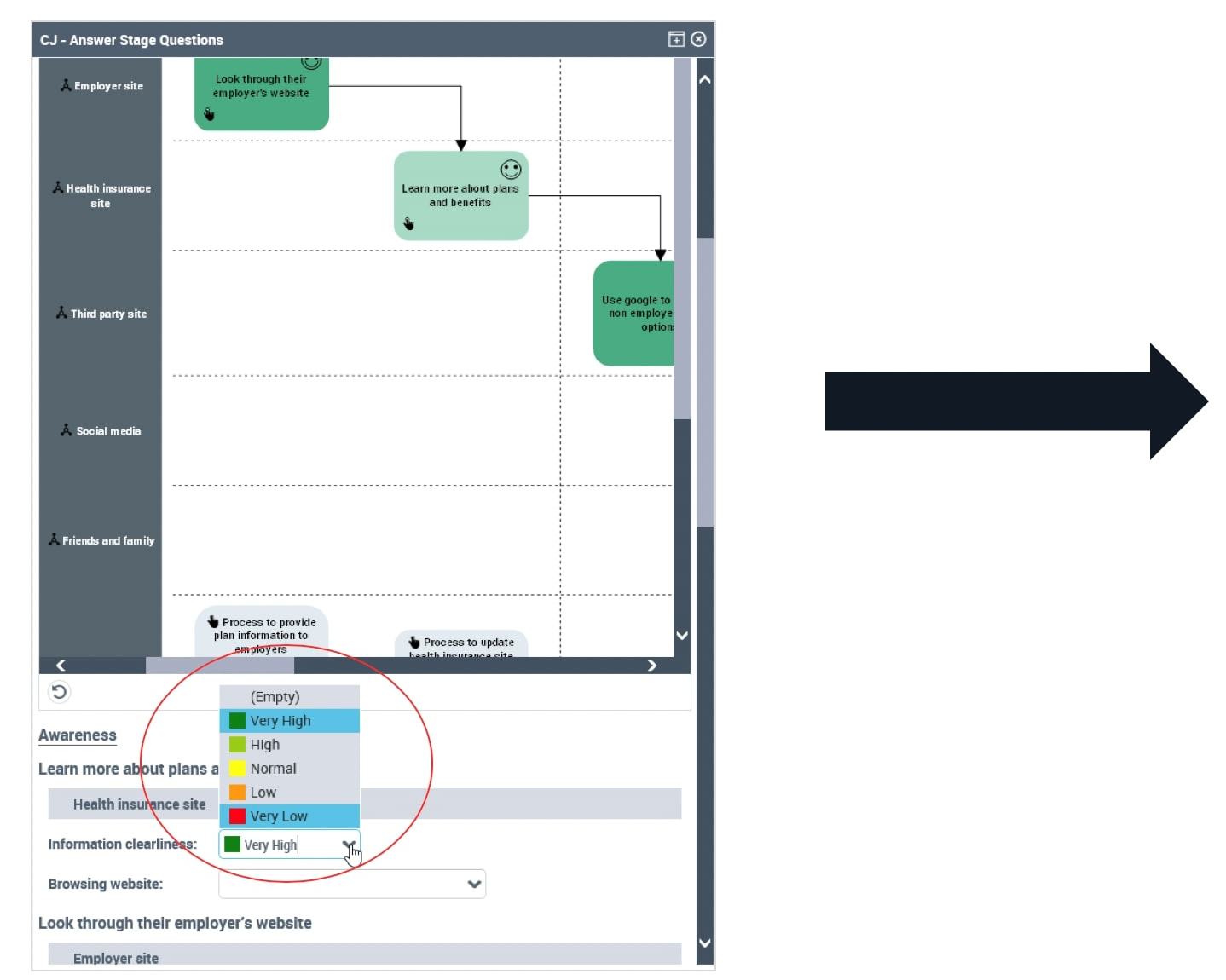
Assessment Example
Rate touchpoints based on a set of criteria at different times
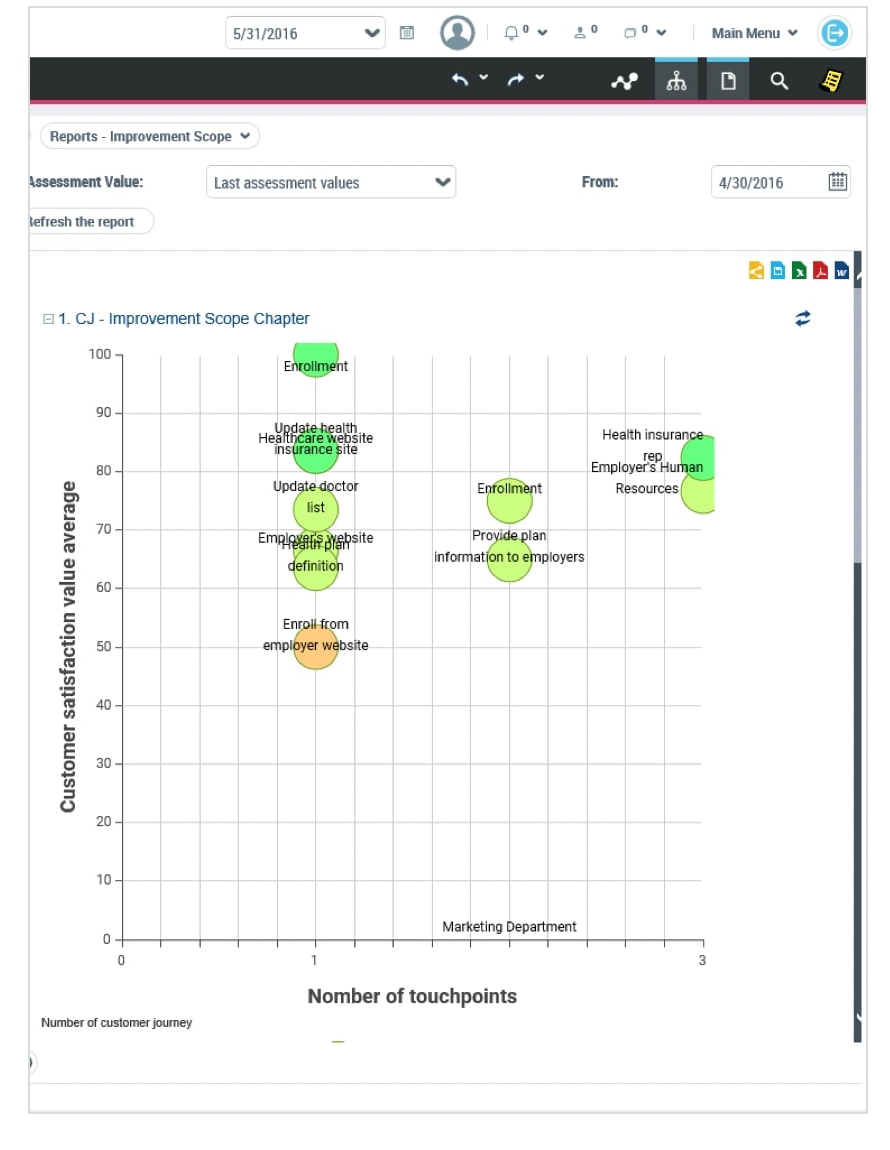
Report on: customer satisfaction x# of touchpoints
Risk Mapping
Enables user to include risks and controls in process models
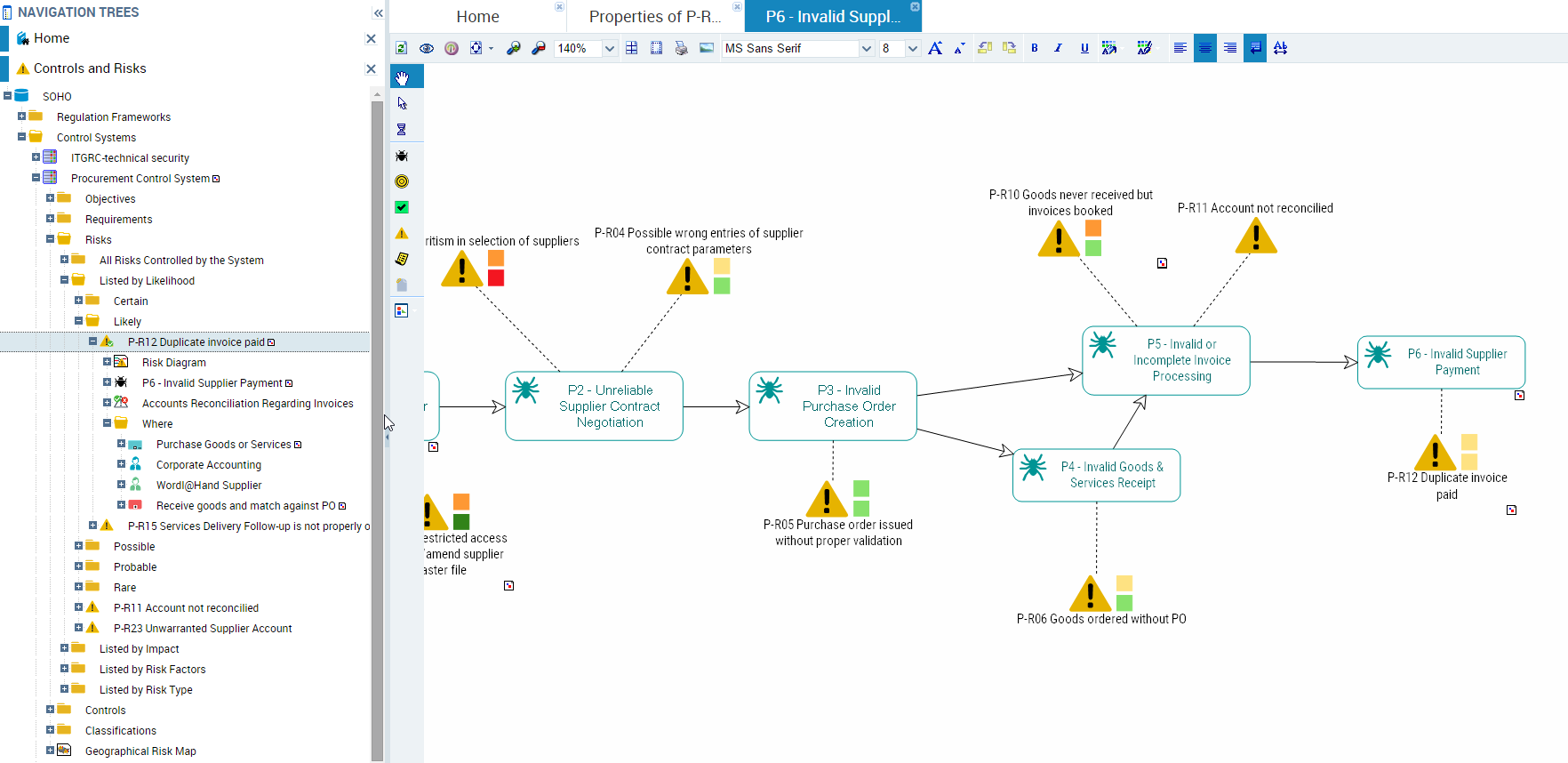
Brings a risk perspective to process models
Risk Identification
Risks are mapped with impacted entities, processes and preventive controls
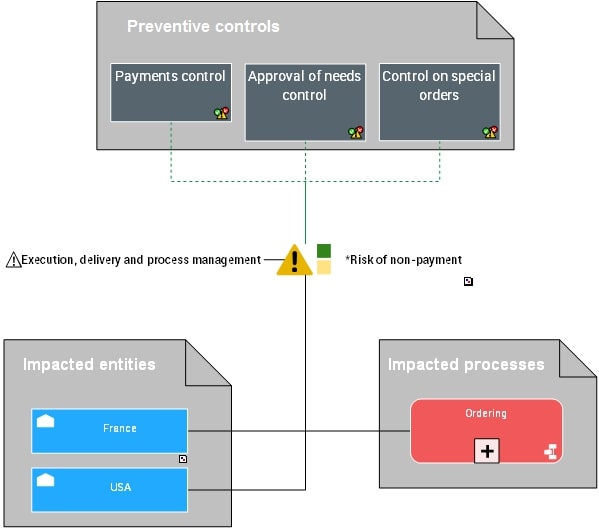
Get a quick glance of all Enterprise Architecture assets impacted by risks and controls in place
Risk Assessment
Each identified risk can be characterized and assessed over a given period of time and organizational scope
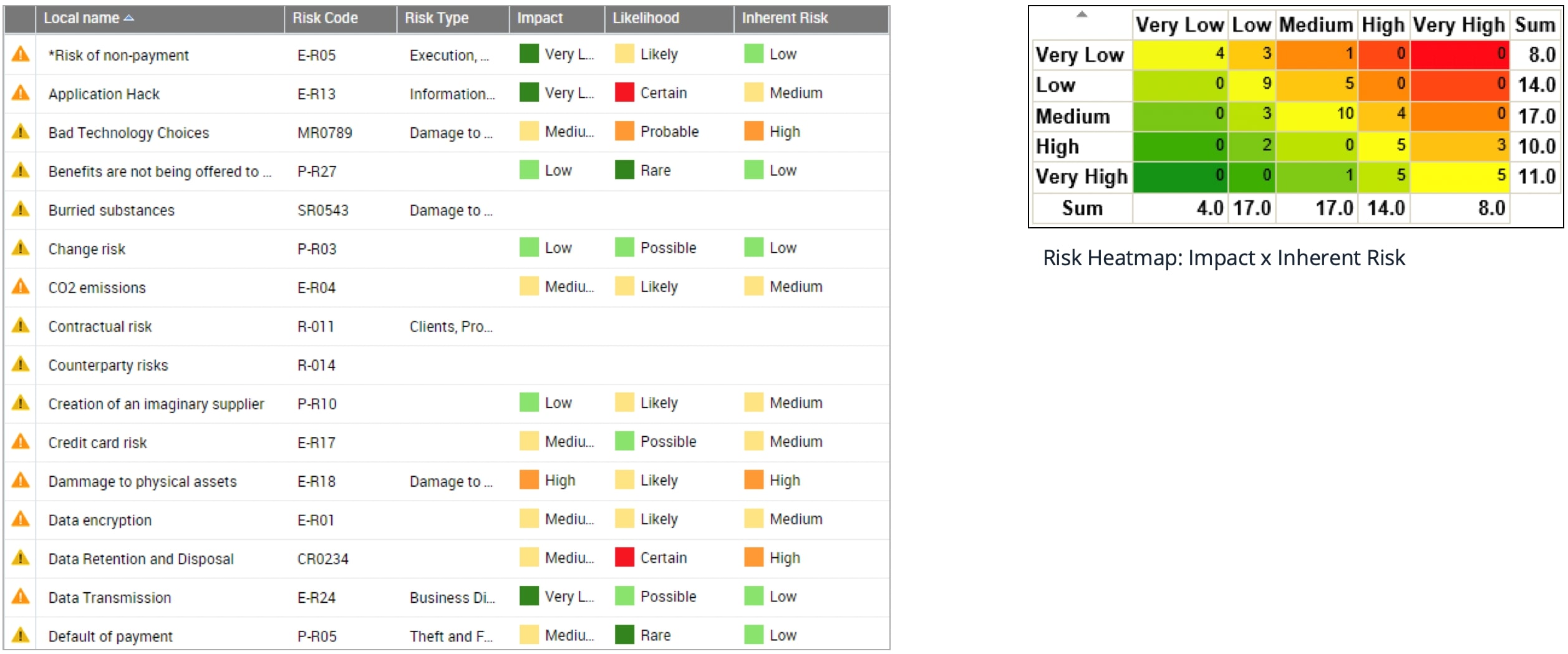
Provides an exhaustive list of risks and related assessment
Controls Mapping
Define preventive controls to mitigate identified risks.
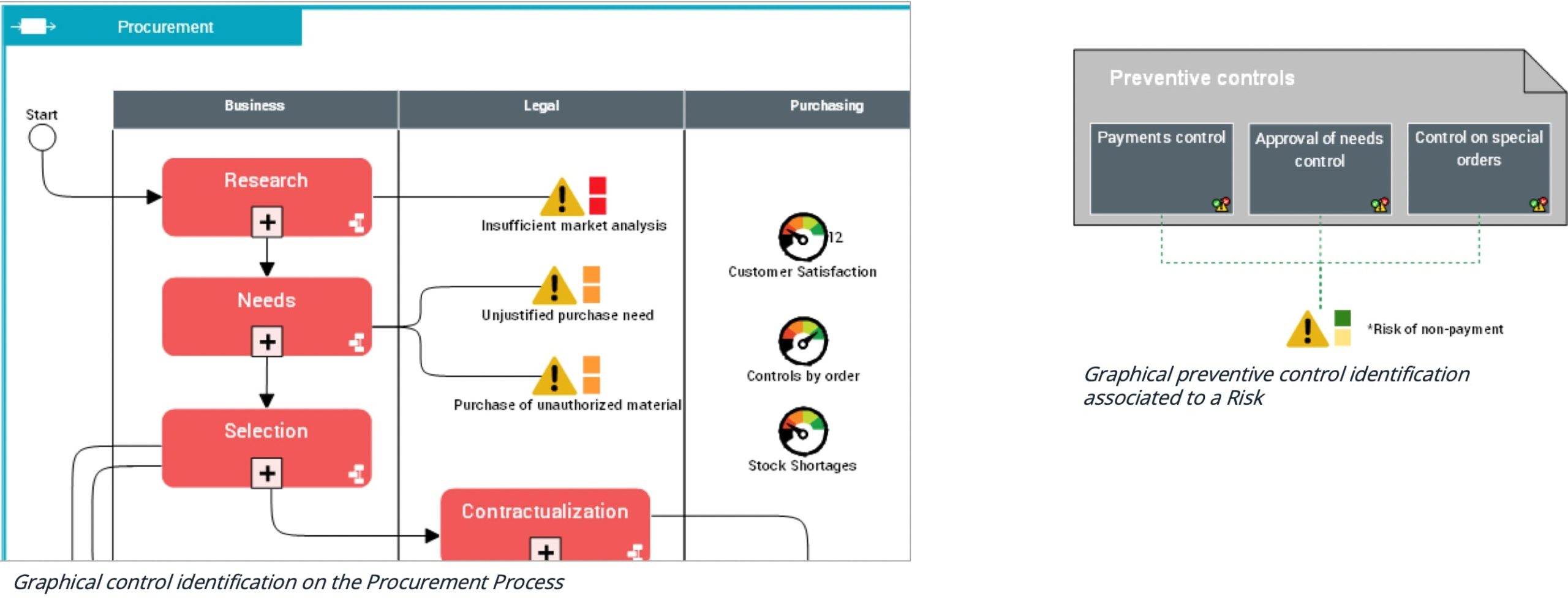
Put main risks under control
Controls Report
Creates custom report of controls
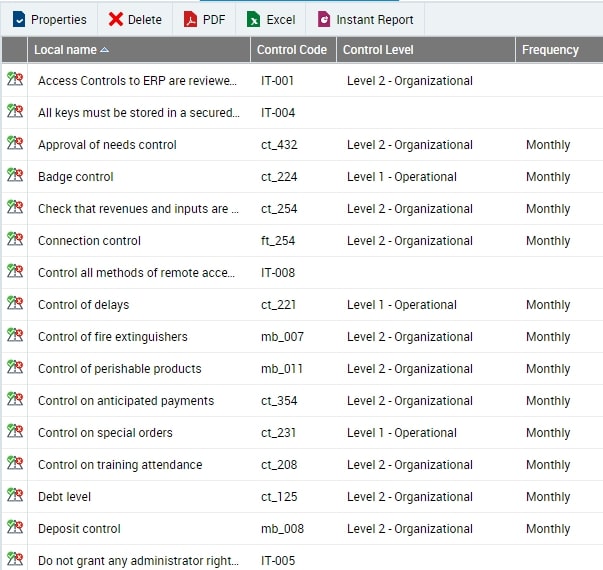
Provides a comprehensive view of controls
